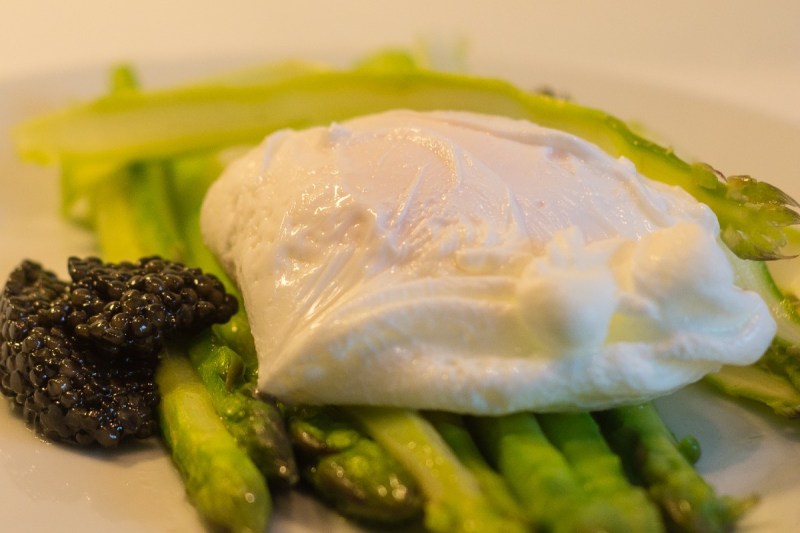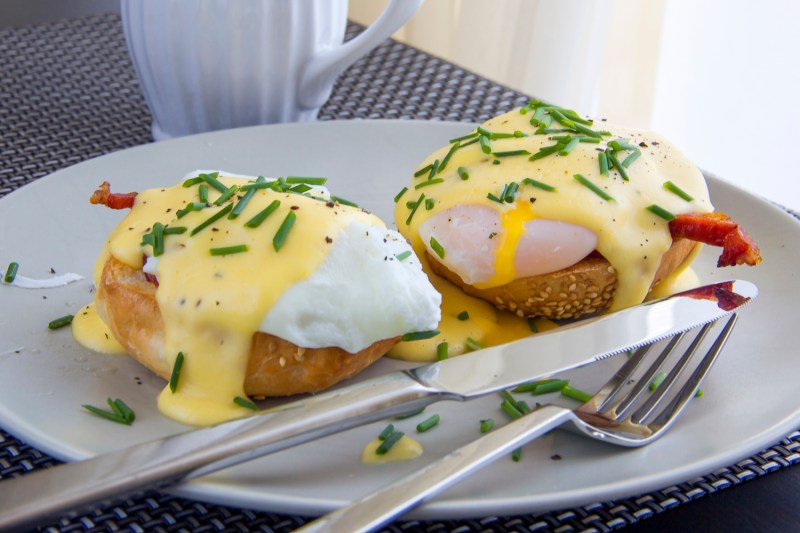
Since their appearance in the 13th-century medieval French cookbook, Le Viandier, poached eggs have served as an aristocratic dish. According to the lifestyle platform Cult.fit, the term “poached” originates from the French word “poché,” meaning small pouch or pocket. This sophisticated method of cooking is essentially steaming the egg to elicit a subtle, almost perfect delicacy — cooked, almost crispy white surrounded by a lush, runny yolk. Be it breakfast, lunch, or dinner, poached eggs serve as the perfect main dish or an addition to many, many meals.
Achieving this culinary delight, however, takes practice and a skilled hand. Fortunately for us, many of these masters are available online. Today, The Manual takes you through Epicurious’ “incredible new way to poach eggs that never fails.” Via Chef Adrienne Cheatham, we will show you how to poach an egg at brunch-level quality in less than 5 minutes.
How to make poached eggs
Whether to add vinegar is something that breakfast enthusiasts have hotly debated, but as you can see, Cheatham is a fan. She notes she uses white distilled vinegar because it has the right level of acidity, and also notes that as long as you only soak the eggs for about 10 minutes, they won’t pick up that vinegar taste.
Cheatham also cautions against a classic poached egg technique — swirling your water to create a vortex when the eggs are cooking — if you’re cooking three or four eggs at a time. She notes that this only works when you’re cooking one at a time (and who has time for that?)
Ingredients
- 3-4 eggs
- 1 cup white distilled vinegar
- 1 cup water
- Salt and pepper
Tools
- 3- or 4-quart pot
- Steel ladle
- Slotted spoon
Method
- Pour 1 cup of water and one cup of vinegar into a mixing bowl. Mix.
- Crack the eggs into the solution, making sure to swish the dish to keep the eggs separate and the solution evenly applied.
- Soak eggs for about 10 minutes to set the egg whites. Finished, denatured eggs will appear opaque.
- Fill your pot with about 3-4 inches of water.
- Bring to a bare simmer. There should only be faint bubbles at the bottom and steam rising from the top.
- Take your ladle and carefully scoop each egg and a little solution into the heated water, leaving room between each separate egg.
- Cook each egg for 2 to 3 minutes, checking for a soft yolk inside a set egg white.
- When eggs are finished, remove from the dish with a slotted spoon, pour off excess water, blot on a fabric towel, and serve on a plate.
- Season with a sprinkle of salt and a couple of cracks of pepper.
- Serve alone, over toast, vegetables, meat, or any combination of the three.
Get ready for some accolades on your new skill serving one of the most famous and sought-after delicacies over the last several hundred years.

Are poached eggs healthier than other egg recipes?
Yes, poached eggs are generally considered healthier than other egg recipes. This is because they are cooked without any added fat or oil, and they retain more of their nutrients than eggs cooked using other methods, such as frying or scrambling.
Another benefit of poaching eggs is that it’s a relatively quick and easy cooking method. This means that you’re less likely to overcook the eggs, which can damage their nutrients.
Ways to serve poached eggs
Since poached eggs are versatile and you can eat them for breakfast, lunch, or dinner, there are several ways to serve them. Here are some ideas:
- On toast, bagels, or muffins
- With eggs Benedict or Florentine
- In a salad
- On top of soup or stew
- In a breakfast sandwich
- On top of vegetables, such as asparagus or broccoli
- As a side dish with any meal
Editors' Recommendations
- How to cook salmon: A complete beginner’s guide
- How to make the best vodka gimlet for a twist on a classic
- The 8 best hot dog topping alternatives you need to try
- How to brunch like the French with lobster croissant and champagne
- The 11 best grill and smoker recipes to make now




